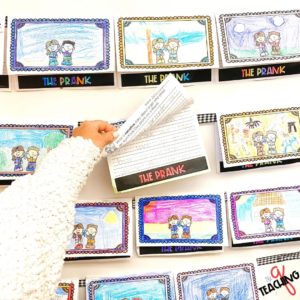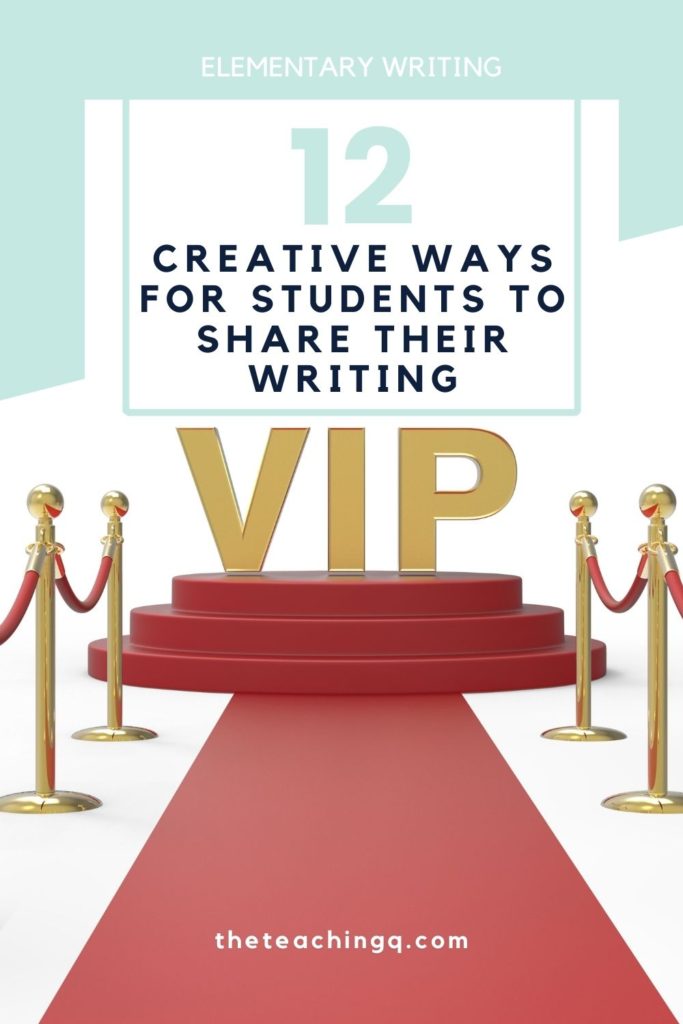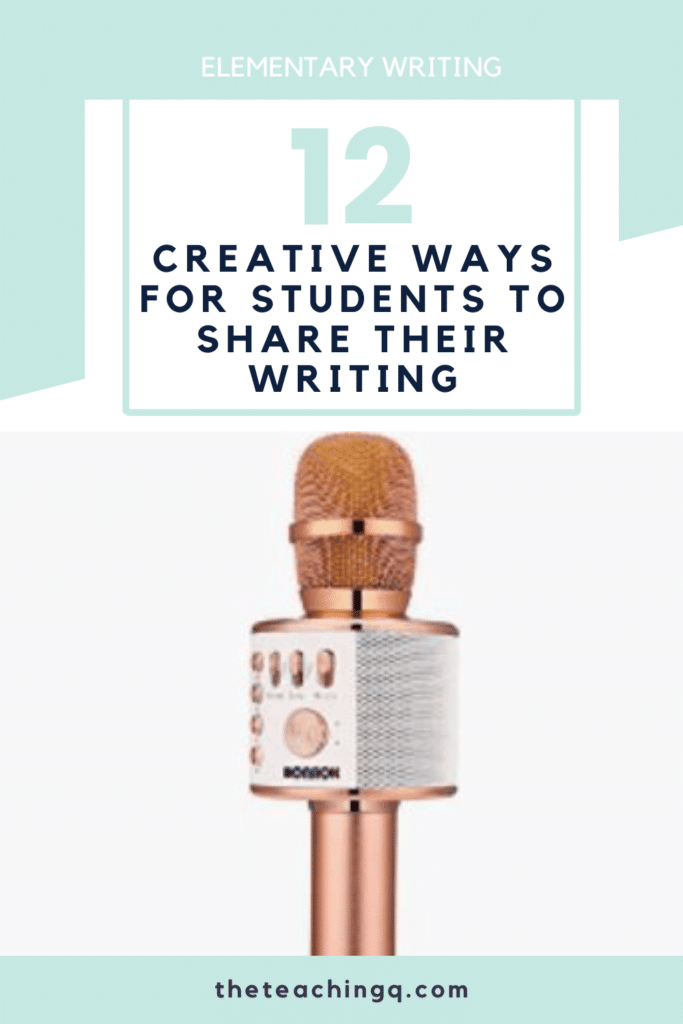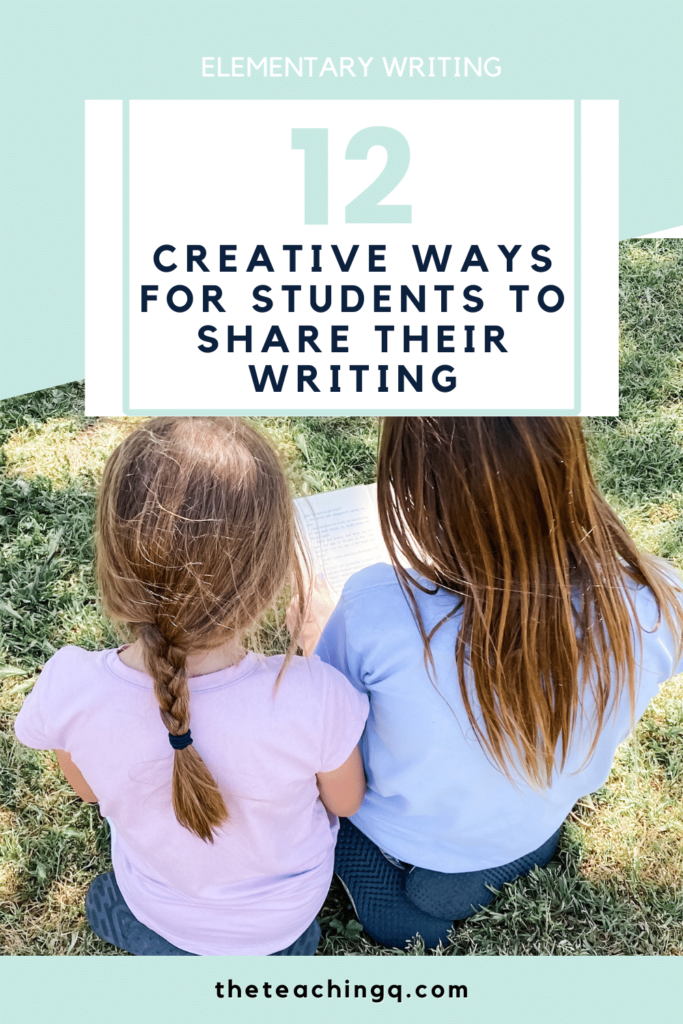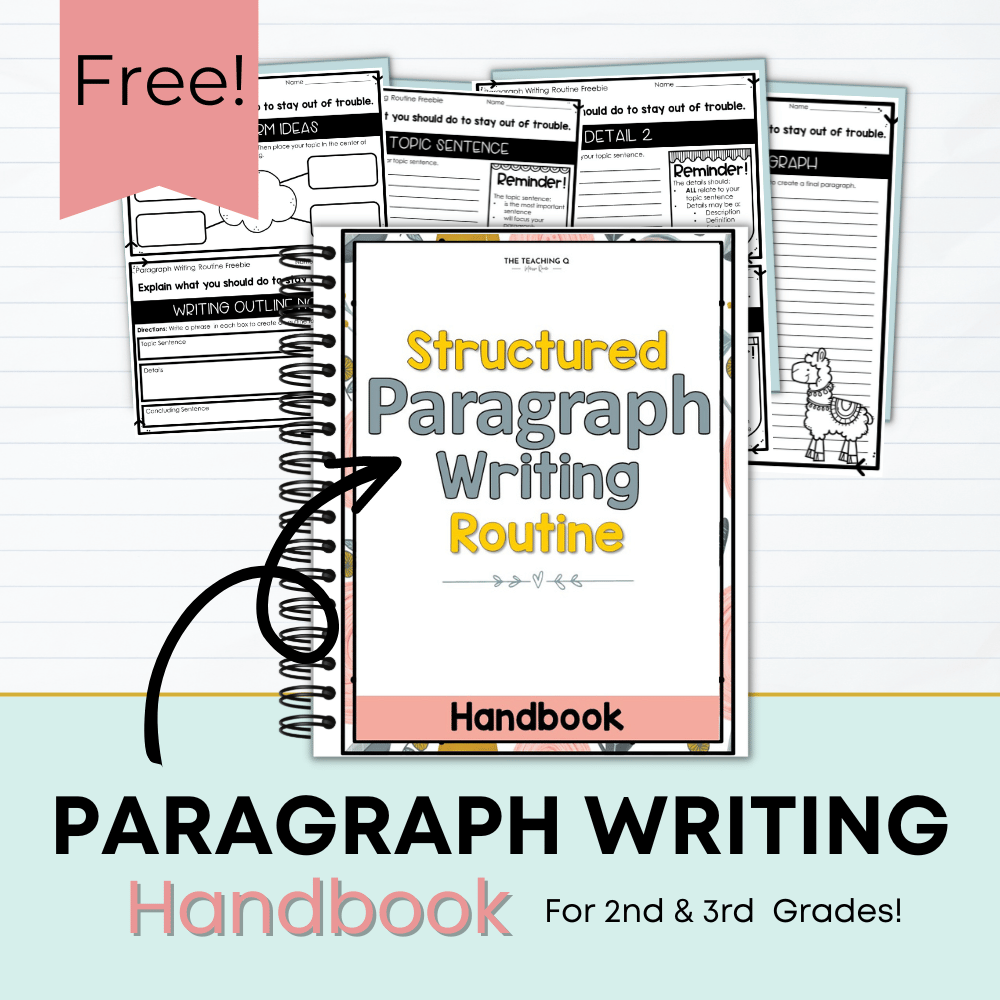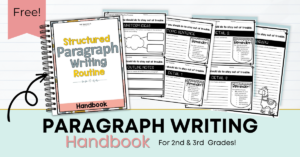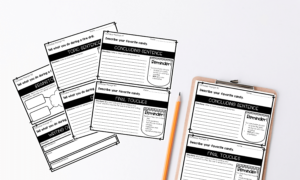Your class has been working on a writing project, and it took much longer than you had expected. The day has finally arrived when you need to pick one of the many ways students can share their writing with the class.
You feel like calling it a day and saying, “Students, take this home and read it to your family.”
But you resist since you know better.
You know that when students share their writing, it accomplishes two crucial things. First, it tells students that their writing is valued. And secondly, it provides an opportunity for feedback.
So, how will your students share their writing?
I’ve created a list of 12 creative ways students can share their writing with the class.
Read aloud with a Cheer!
One of the most common ways to have students publish their writing is to read it aloud to the class.
Okay, so maybe this first method isn’t creative, but it is still effective.
How the Read-Aloud Works:
Each day, I have a writing objective for the lesson. After I model the skill to the class, students begin to write their drafts. Once completed, one at a time, students stand to read their writing aloud to the class. After each reading, we had a brief moment of feedback, and all students celebrated with quick cheers and applause.
Teacher Tip:
Art with Mrs. Paula Liz on YouTube demonstrates a variety of cheers to use after your student read aloud. My personal favorite is the “Raise the Roof” cheer.
Benefits of the Read-Aloud to the Class
- Students who struggle with writing have the chance to hear classmates completed work, which may guide their writing.
- Students who take a more extended period will have time to continue writing while other students read their writing aloud.
- Feedback is quickly shared. Students can make the adjustments right away.
- Each day’s read-aloud is a small piece of a more extensive assignment. Over several days, students may receive feedback on the entire project.
Small-Group or Partner Sharing
How it Works:
Students are placed with a partner or small group of 4-5 students and take turns reading their writings with the partner or small group members, each giving a compliment and suggestion.
Teacher Tip for Small Group Sharing:
I assign my groups of four the following roles:
- Leader- the facilitator
- The secretary assists in tasks such as looking up words in the dictionary.
- Timekeeper- sets the timer to manage the allotted time
- Peace Builder- monitors and assists feedback/discussions in a peaceful manner
Teacher Tip for Partner Sharing:
Teach students a Peer Feedback Routine. Use the simple acronym SPARK to help students remember the elements of effective feedback.
- S-specific comments on words, phrases, or sentences
- P-possible revisions discussed
- A-actions for improvement
- R-reference the writing checklist or rubric
- K-kind discussions are appreciated
Benefits:
Students are less intimidated by the smaller group and feel more comfortable sharing their writings.
Speed Dating
How it Works:
Two rows of students face one another. Partner A shares their writing with partner B. Then, one row moves a single spot to the left until all students have shared.
Benefits:
- Students have the opportunity to hear a variety of writings and can take note of solid writing.
- If you’re short on time, this strategy will allow all students to share in a shorter amount of time.
- May complete this activity outside for a change of pace and a new learning environment.
Writing Gallery
How it Works:
Students complete a writing worksheet, like the Fold & Hang Writing Prompts, or a monthly writing craft, such as one from the Writing Craft Activity BUNDLE. The completed projects are hung on a wall for all to read and see, as in an art gallery.
Teacher Tip:
If you find students need more instruction on how to write a strong paragraph, I have this blog post to get you started.
Benefits:
- The students are less intimidated since there is no reading out loud. Instead, students are reading each other’s writing silently.
- Sharing student-published work is quick and allows for increased instructional minutes in other subject areas.
- Students are proud to display their work for all visitors to read and enjoy.
A Class Book
How it Works:
The teacher binds copies of the final writing. I prefer to use a spiral binding machine for a longer-lasting class book.
Teacher Tip:
If you do not have access to a binding machine, hole punch each paper and place a metal book ring through each hole as an alternative.
Benefits:
Student writing can be shared a little over an extended time and retrieved throughout the year.
Exit Ticket Home
How it Works:
Students write that day’s writing on a small piece of paper to share with parents and family members.
Benefits:
Families are involved in the educational process, which is a win-win for everyone.
Big Buddies (AKA Cross-Age Tutoring)
How it Works:
Although the structure may vary, an upper and lower grade class usually joins to form “Big Buddies.”
Teacher Tip:
The SPARK strategy is used with Big Buddies as well.
Benefits:
Students receive the 1:1 feedback and guidance of an older student with more skills. More senior students learn the benefits and responsibilities of mentoring a younger student.
Flipgrid Recording
How this Works:
Flipgrid.com is a favorite online platform that allows teachers to assign student video projects. The students read or speak their writing project to the camera while filming. Once students complete their recordings, there is an option to add decorative elements to jazz up the presentation.
I’m sure you can imagine how much fun students have with Flipgrid. If you haven’t already tried it, don’t wait any longer.
You will have students begging for more.
Benefits:
- Students feel safe sharing in private. The recording may or may not be public. That’s left to the teachers’ discretion.
- Many students enjoy the creative element of the presentation.
- The teachers’ feedback may be kept confidential.
Google Classroom or Other LMS
How it Works:
Students may place their writing in a shared drive in Google Classroom.
The classmates may then access the papers and leave comments for one another.
Benefits:
- It saves time, which once again leaves more time for instruction.
- Students have saved feedback to revisit throughout the year when assessing growth.
Authors Chair, On Stage or At the Mic
How it Works:
The teacher provides a director’s chair, a platform stage, or a simple microphone for students to stand in front of the class and read their writing aloud.
Teacher Tip:
A director’s chair is often pricey, even on Amazon. So I jumped on Facebook Marketplace and scored an old bar stool. The height is ideal for placing students front and center.
Benefits:
- Many students enjoy being the center of attention.
- The students feel celebrated and recognized.
Printed Hardback Books
How it Works:
Student Treasures is a company that will take each student’s writing plus illustrations and publish it into an actual book. You can have your class write individual books or have each student complete one page of a class book.
Benefits:
- Students enjoy the entire publishing process.
- Families get a book as a keepsake.
A Themed Publishing Party
How it Works:
The teacher transforms the classroom into a party to celebrate the completed writing projects. One fan-favorite transformation is to turn your classroom into a red-carpet awards show.
Teacher Tip:
Roll out red bulletin paper down the center of your classroom. Then, cut out a ton of yellow stars to place along the sides. The final look becomes your runway for the red carpet-celebration.
Benefits:
Students feel celebrated and enjoy the creative role-playing aspect of the day.
Celebrating student writing doesn’t need to be boring. The possibilities are endless. So next time your class finishes a writing project, steal one of these twelve publishing ideas. Your students will appreciate the time to shine, and you’ll have a little fun along the way.
So, which way will you use to have students share their writing next?
Are your students struggling and making very little progress in writing? Or maybe they’re unmotivated or a reluctant writer? If so, I’ve got your back.
Yes…I…Do!
Let me share my secret sauce when it comes to teaching writing to elementary students.
It’s the Sentences, Paragraphs, and Essays: OH, MY! E-book.
Click this link to learn more about how the E-Book can transform your students’ chicken scratch, hap-hazard writing into strong, effective, glorious writing!
Let’s support young writers together,
-Melissa




